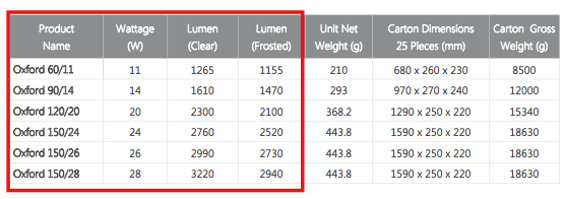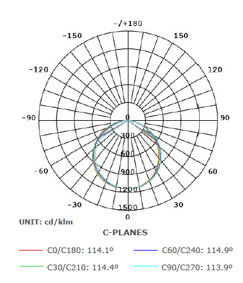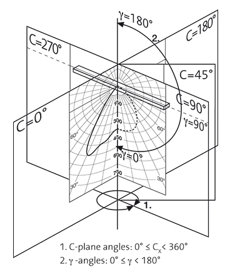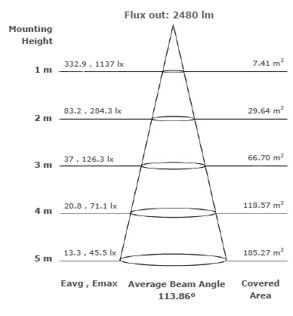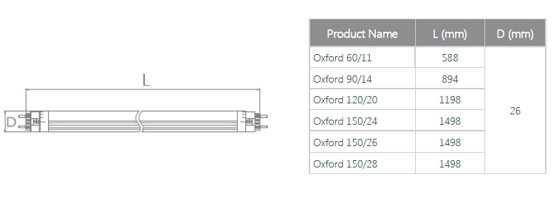This is part two of Lumia's data sheet terminology explanations and definitions to clarify any misunderstandings that may arise from reading the data sheets.
Ingress Protection
Ingress Protection (IP) ratings are developed by the European Committee for Electro Technical Standardization (CENELEC) (NEMA IEC 60529 Degrees of Protection Provided by Enclosures - IP Code). The number code indicates the environmental protection the product provides. The first number shows the protection level against solid objects. The second number shows the protection level against liquids.
Power Factor
This is defined as the power drawn by the LED driver divided by the product of the applied voltage and the current drawn. It is a factor that needs to be 0,9 or above, to not cause concerns for the premises at industrial or commercial buildings. This number is relevant to assess the quality of the LED driver. As with Total Harmonic Distortion, this indicates the voltage and current waveforms in the building where the product is installed and the effect it will have on the installation and all of its electrical applications in that installation area.
A rule of thumb is to always have the indication of either the Total Harmonic Distortion (THD) or the Power Factor (PF) since these two numbers will always be strongly linked together. Bad driver quality will always means a low PF and can be seen as low as 0,4 in some cases.
Operating Humidity Range
It refers to the humidity allowed within the indicated percentage in order to avoid any interruptions or dysfunctions of the product. This range is always shown with a minimum and maximum value.
Operating Temperature Range
Shows in what temperature range the light source can operate. The values will always come with a minimum and maximum value and means that within this range, the product will fully function.
Certifications
Confirms that the product is fully compliant to operate under the certified indicated markets. The product has passed performance tests and quality assurance tests and meets the required criteria of the specific market. As an example for the European market, all electrical products need to be CE certified and RoHS compliant.
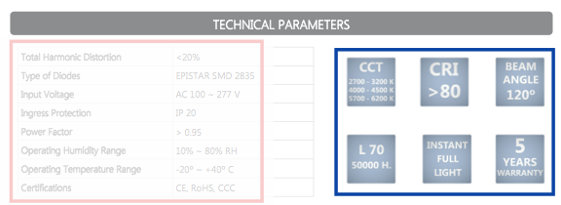 |
|
Lumia products technical parameters. (All images courtesy of Lumia) |
3. TECHNICAL PARAMETERS - ICONS
Through the icons, we indicate the performance of the product, its lifetime and the warranty. See the example below.
CCT - Correlated Colour Temperature
Is a measure of light source colour appearance defined by the proximity of the light source’s chromaticity coordinates to the blackbody locus. The CCT of a light source can be determined by extending an ISO-temperature line from the blackbody locus out to the chromaticity coordinates of the source.
The CCT will always be given in Kelvin (K). CCT values give an indication of the apparent “warmth” or “coldness” of the light emitted by the source. Light sources with low CCT values (2700-3000 K) provide light that appears “warm”, while light sources having high CCT values (4000-6500 K) provide light that appears “cold”.
CRI – Colour Rendering Index
Is a measurement that quantifies the ability of a light source to reproduce colours, as they would appear in natural light. The number indicated is within a spectrum of 0-100 and a higher number means closer to perfect replication.
In our example, the Tube Light has a CRI >80, meaning that more than 80% of the colour spectrum is appearing as natural light with the same temperature.
Beam Angle
Shows the angle at which the light is being directed. The Beam Angle will change according to different light sources and usage of the light source. A different Beam Angle can create effects of more directional lighting, highlighting a specific colour or item, or more diffused, general lighting.
L70 – Lumen depreciation to 70% of initial lumen output
This means that after the stated lifetime the light source will still have 70% of its initial lumen output. LED emitters will not burn out or just all of a sudden not work anymore like other types of light sources. LED emitters fade over time to a point which will be considered below a usable level of intensity. It is this exact level, which has been declared L70.
Instant Full Light
Unlike other traditional light sources, all Lumia products come with Instant Full Light. No warm-up or prolonged start period for full light.
Warranty
Declares the warranty period for the product. Lumia are proud of our 5 years warranty which most of our products enjoy. We warrant the performance of our products within lumen output, energy consumption, output degradation, correlated colour temperature, colour rendering. Insurance cover by a major international insurance company backs the Lumia® Extended Warranty.
4. PRODUCT INFORMATION
The different models within a product series will be shown and its different varieties.
The first column shows the name with the different variations. The second column shows the power output of each product. The third column represents the luminous flux, which is measured in Lumen (Lm) and is the total amount of light produced by a source without regards to any direction.
In the case of the shown picture two lumen values are shown and indicate the flux level with a clear cover or with a frosted cover for the tube light.
5. PHOTOMETRIC INFORMATION – LIGHT DISTRBUTION CURVE
The Light Distribution Curve drawn in a polar diagram denotes the luminaire’s luminous intensity in different directions as a function of viewing angle in one or more planes. One line indicates the light distribution perpendicular to the light source’s longitudinal axis, and another line indicates the light distribution in direction of the longitudinal axis.
The values of the light distribution curves are scaled to correspond to 1000 Lm from the light source (cd/1000 Lm, cd/ klm).
The luminaire’s light distribution is measured on several C-Planes around the luminaire, at intervals of at least 15°.
First measurement plane (C=0°) is across the lamps’ longitudinal axis. γ-angles – several angles are measured, at least every 5 degrees.
6. PHOTOMETRIC INFORMATION – AAI FIGURE
The curve indicates the illuminated area and the average illumination when the luminaire is at different distances. This will be shown according to the Beam Angle and will only be within that given angle/area. This also means that there can be more flux that will not be shown in the data of the AAI figure.
Mounting Height: Is indicated on the left side and in this case, measured for 1 to 5 meters.
Flux Out: The output of luminous flux within the Beam Angle of the product.
Eavg: The average illuminance measured in lux.
Emax: The maximum illuminance measured in lux.
Average Beam Angle: The beam angle used for the measurement of that specific AAI figure.
Covered Area: Area/surface that is covered by the Beam Angle and height.
7. DIMENSIONS
The final section of our Data Sheets shows the dimensions of each product in the Series. In our example, you can see the different length for the Oxford Series Tubes.
We hope this article has given you useful information, and as always, we are here to help you with your next project.
Do not hesitate to contact us for more information!
Lumia® - A Registered Trademark of Monda Holding Aps
www.lumiaonline.com








